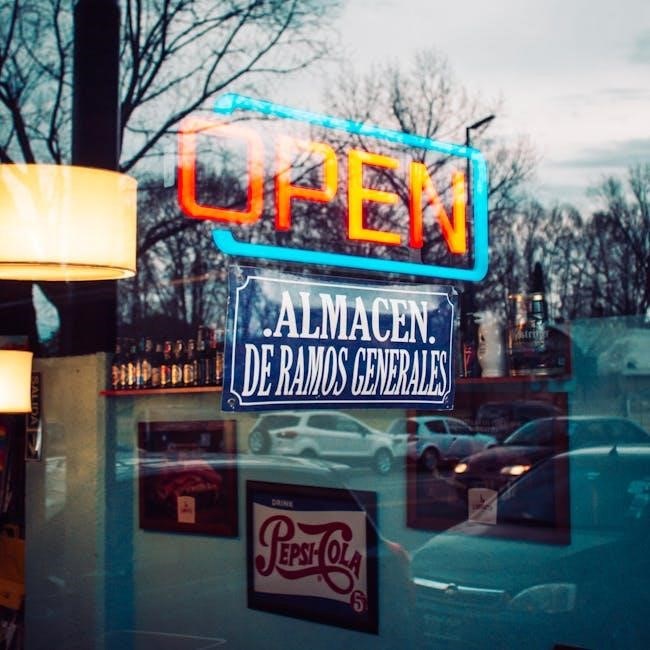
A restaurant menu is a crucial element beyond just listing dishes‚ reflecting the establishment’s concept‚ design‚ and customer experience‚ making it a cornerstone of successful dining.
Importance of Menu Design in Restaurants
Effective menu design is vital for enhancing customer experience and driving sales. A well-structured menu guides patrons through dining choices‚ subtly promoting high-margin items. Strategic layout‚ fonts‚ and visuals create a visual hierarchy‚ influencing decision-making. It reflects the restaurant’s brand identity and concept‚ making it a powerful tool for attracting and retaining customers. A thoughtfully designed menu can elevate perceived value and satisfaction‚ ensuring a memorable dining experience.
Overview of Menu Types and Structures
Restaurants utilize various menu types‚ including static‚ interactive‚ and digital formats. Static menus are permanent and categorized‚ while interactive menus enhance engagement through apps or kiosks. Digital menus‚ often linked to social media‚ offer convenience. Structurally‚ menus are divided into sections like appetizers‚ entrees‚ and desserts‚ ensuring clarity and ease of navigation. Each type and structure is tailored to the restaurant’s concept‚ target audience‚ and operational needs‚ ensuring an optimal dining experience.

Planning Your Restaurant Menu
Planning involves defining your concept‚ understanding your audience‚ and structuring menu items to balance variety and simplicity‚ ensuring a cohesive and appealing dining experience for customers.
Defining Your Restaurant’s Concept and Cuisine
Defining your restaurant’s concept and cuisine is the foundation of menu planning. It establishes your identity‚ guiding menu design‚ pricing‚ and presentation. Consider your target audience‚ kitchen capabilities‚ and desired dining experience. Align your menu with your concept‚ ensuring consistency and authenticity. This clarity attracts customers seeking specific cuisines or experiences‚ helping you stand out in a competitive market while maintaining a cohesive brand image.
Considering Target Audience and Menu Length
Understanding your target audience is vital for creating a menu that resonates with their preferences and dining habits. Menu length should balance variety and simplicity‚ avoiding overwhelm. Research suggests 7-10 items per category (e.g.‚ appetizers‚ entrees) is ideal‚ ensuring clarity while maintaining customer interest. This approach enhances decision-making and streamlines kitchen operations‚ providing a seamless dining experience tailored to your audience’s needs and expectations.
Creating a Delivery-Friendly Menu Option
A delivery-friendly menu should focus on items that travel well‚ ensuring quality and presentation upon arrival. Include popular dishes and high-margin items‚ while avoiding fragile or complex preparations. Packaging must be sturdy‚ leak-proof‚ and insulated to maintain food integrity. Clearly label menu items with reheating instructions and allergens. This tailored approach enhances customer satisfaction and streamlines delivery operations‚ making it a valuable addition to your restaurant’s offerings.
Menu Structure and Layout
A well-organized menu structure guides customers through dining choices‚ enhancing their experience. Strategic layout and category organization ensure clarity‚ making it easy for patrons to navigate and order efficiently.
Organizing Menu Categories (Appetizers‚ Entrees‚ Desserts)
Organizing menu categories like appetizers‚ entrees‚ and desserts ensures a logical flow‚ making it easy for customers to navigate. Typically‚ appetizers come first‚ followed by main courses‚ and ending with desserts. Placing high-margin items in visible spots encourages sales. Grouping similar dishes simplifies decision-making and enhances the dining experience. Clear headings and spacing between categories improve readability‚ while descriptive names add appeal and guide patrons seamlessly through their meal choices.
Strategic Placement of High-Margin Items
Positioning high-margin items prominently‚ such as at the top of the menu or in the center‚ can significantly boost sales. These items should be highlighted with bold fonts‚ images‚ or descriptive language to draw attention. Placing them in areas where customers naturally focus ensures they are more likely to be noticed and ordered. Balancing profitability with customer preferences helps maintain satisfaction while maximizing revenue.
Designing Menu Fonts‚ Spacing‚ and Composition
Choosing the right fonts‚ spacing‚ and composition is essential for a visually appealing menu. Opt for readable fonts that align with your restaurant’s style‚ ensuring text is easy to scan. Proper spacing prevents clutter‚ making the menu visually clean. Use bold or larger fonts for high-margin items to draw attention. Incorporate images or graphics sparingly to enhance appeal without overwhelming the design. Balance aesthetics with functionality to create a menu that is both attractive and user-friendly.
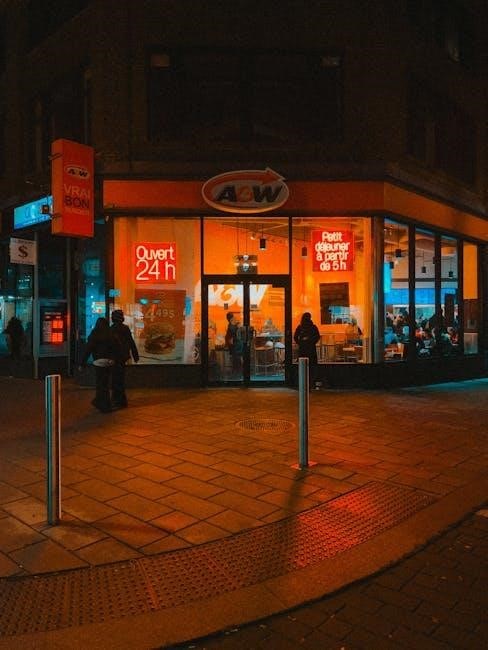
Writing Effective Menu Descriptions
Craft clear‚ concise‚ and appetizing descriptions that guide customers through your menu. Highlight key ingredients‚ flavors‚ and preparation methods to enhance appeal and inform diners effectively.
Crafting Appetizing Item Descriptions
Item descriptions should be clear‚ concise‚ and mouthwatering‚ highlighting key flavors‚ textures‚ and ingredients. Use vivid language to paint a picture of the dish‚ ensuring it appeals to the senses. Keep descriptions brief‚ as guests typically spend less than 90 seconds reviewing a menu. Focus on what makes each dish unique‚ such as premium ingredients or signature cooking methods‚ to entice diners and enhance their decision-making process.
Using Language to Enhance Appeal and Sales
Language plays a key role in making menu items irresistible. Use descriptive words like “succulent‚” “aromatic‚” or “handcrafted” to evoke emotions and appetite. Highlight premium ingredients‚ cooking methods‚ and unique flavors to create vivid imagery. Keep descriptions concise yet engaging‚ as diners often make quick decisions. Focus on what sets your dishes apart‚ ensuring every word enhances appeal and encourages customers to order.

Psychology of Menu Design
Menu design influences customer decisions through visual hierarchy‚ color schemes‚ and strategic item placement‚ guiding diners toward profitable options while enhancing overall dining experience.
Understanding Customer Behavior and Decision-Making
Customers often spend less than 90 seconds reviewing a menu‚ making clarity and appeal crucial. Strategic placement of high-margin items and clear descriptions guide decisions‚ while psychological cues like language and visuals enhance appeal. Understanding these behaviors helps restaurants design menus that subtly influence choices‚ ensuring a seamless and profitable dining experience.
Color Schemes and Visual Hierarchy in Menus
Color schemes and visual hierarchy play a vital role in menu design‚ guiding customers’ attention to key items. Warm tones like red and orange stimulate appetite‚ while cooler tones create a modern feel. Strategic use of fonts‚ spacing‚ and imagery ensures high-margin items stand out‚ influencing customer choices and enhancing profitability without overwhelming the diner.
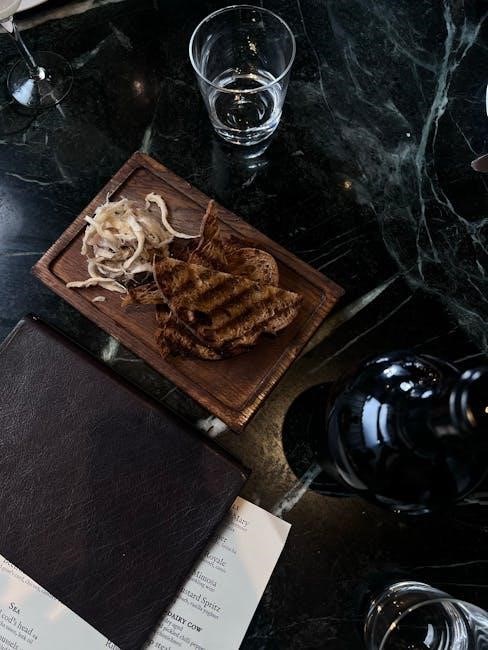
Digital and Interactive Menus
Digital menus‚ including app-based‚ kiosk‚ and tablet-based systems‚ enhance customer interaction and accessibility‚ allowing diners to explore options effortlessly while linking to social media and online platforms.
Types of Interactive Menus (App‚ Kiosk‚ Tablet-Based)
Interactive menus come in various forms‚ including app-based‚ kiosk‚ and tablet-based systems. App-based menus allow diners to view and order via smartphones‚ while kiosk menus are ideal for fast-food settings‚ enabling self-service ordering. Tablet-based menus provide an elegant‚ touchscreen experience‚ often used in fine dining. Each type enhances user interaction‚ streamlines ordering‚ and can be linked to social media and online platforms for broader accessibility and convenience.
Linking Digital Menus to Social Media and Online Platforms
Linking digital menus to social media and online platforms enhances accessibility and engagement. By sharing menu links in bios or posts‚ restaurants allow customers to preview offerings before visiting. This integration boosts visibility‚ drives traffic‚ and simplifies online ordering. Platforms like Instagram and Facebook enable seamless menu sharing‚ fostering customer interaction and increasing sales opportunities while maintaining brand consistency and appeal.
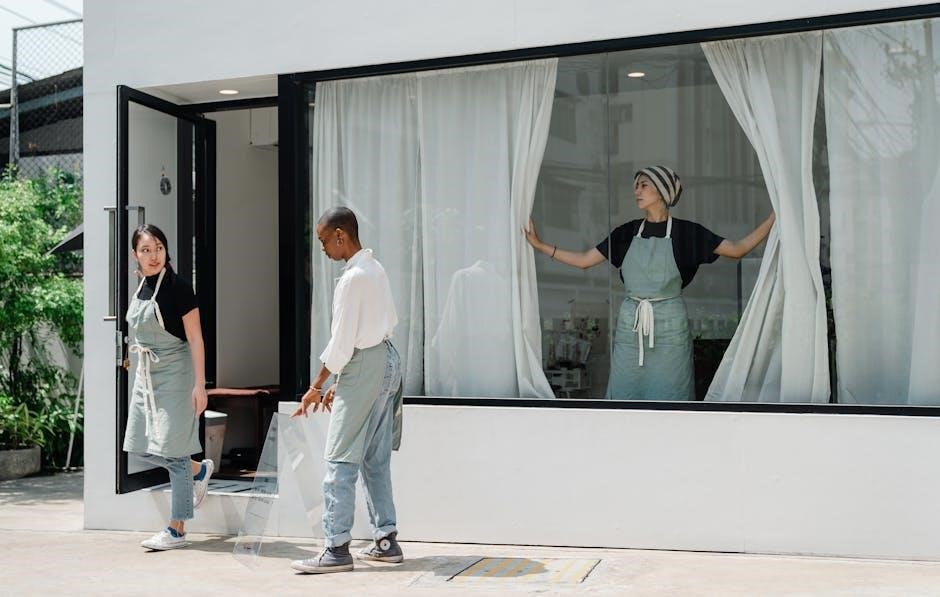
Menu Management and Updates
Effective menu management involves using tools to update and create menus‚ allowing restaurants to adapt quickly. OpenTable offers solutions for in-house management or vendor delegation‚ meeting all restaurant needs.
Tools for Creating and Managing Menus
Restaurants can utilize platforms like OpenTable to create and manage menus efficiently. These tools allow for easy updates‚ seasonal adjustments‚ and the creation of special occasion menus. They also enable restaurants to delegate tasks to vendors if needed‚ ensuring flexibility and adaptability. Additionally‚ these tools support digital menu integration‚ helping restaurants maintain consistency across online and physical platforms while enhancing customer convenience.

Seasonal and Special Occasion Menus
Seasonal and special occasion menus allow restaurants to stay relevant by adapting offerings to holidays‚ cultural events‚ or ingredient availability. These menus often feature fresh‚ locally-sourced items and themed dishes‚ creating a sense of urgency and exclusivity. Tools like OpenTable simplify updates‚ enabling restaurants to launch limited-time menus seamlessly. This approach not only drives sales but also enhances brand identity and customer satisfaction through creative‚ timely offerings.
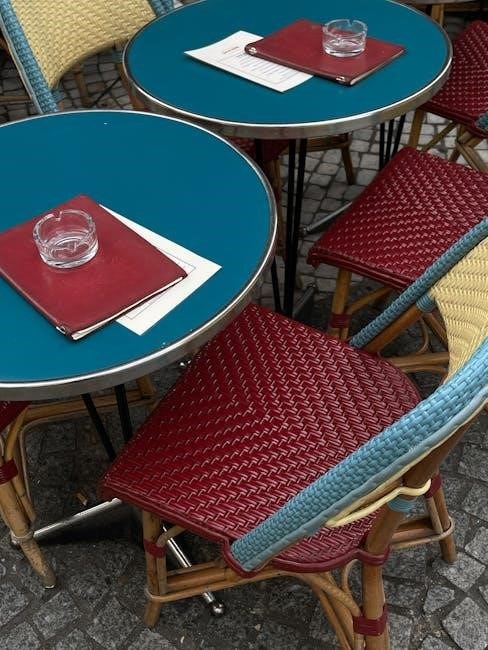
Staff Training on Menus
Staff training ensures employees can confidently present and explain menu items‚ handle customer inquiries‚ and make recommendations‚ enhancing the dining experience and boosting sales through knowledgeable service.
Teaching Staff to Present and Explain Menu Items
Teaching staff to present and explain menu items confidently is vital for enhancing customer satisfaction. Train employees to use descriptive language‚ highlight key flavors‚ and explain ingredients clearly. This ensures customers understand the offerings and feel confident in their choices. Emphasize the importance of enthusiasm and knowledge to create a positive dining experience‚ which can also increase sales and improve customer loyalty to the restaurant.
Handling Menu-Related Customer Inquiries
Handling menu-related customer inquiries effectively is crucial for a positive dining experience. Well-trained staff should be knowledgeable about ingredients‚ preparation methods‚ and dietary options to answer questions confidently. This ensures customers feel informed and satisfied‚ leading to increased loyalty and repeat visits. Additionally‚ staff can highlight popular dishes and specials‚ enhancing the overall dining experience and boosting customer satisfaction. A proactive approach to addressing dietary restrictions and preferences also fosters trust and appreciation‚ reflecting positively on the restaurant’s commitment to quality.
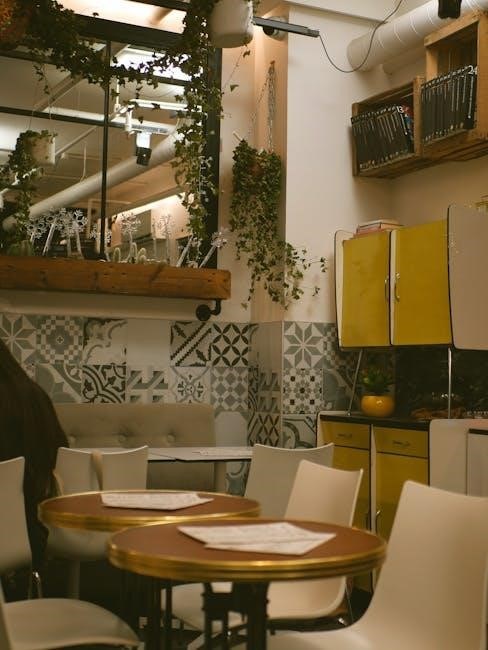
Marketing and Promoting Your Menu
Effective menu marketing involves showcasing signature dishes‚ leveraging digital platforms‚ and integrating social media to highlight menu items‚ enhancing brand identity and attracting customers.
Highlighting Menu Items in Restaurant Marketing
Highlighting menu items in marketing boosts visibility and appeal. Showcase signature dishes‚ high-margin items‚ and seasonal specials through vibrant photos and enticing descriptions. Use social media platforms to share menu sneak peeks‚ behind-the-scenes kitchen content‚ and customer reviews. This strategy enhances brand identity‚ attracts diners‚ and keeps the menu fresh in customers’ minds‚ driving interest and sales effectively.
Using Menus to Enhance Brand Identity
A well-designed menu is a powerful tool for reinforcing a restaurant’s brand identity. Through consistent typography‚ color schemes‚ and language‚ menus convey the establishment’s style and values. Highlighting signature dishes and unique offerings aligns with the brand’s voice‚ whether casual or upscale. Including logos and themed categories further strengthens recognition‚ ensuring the menu becomes an extension of the restaurant’s overall identity and guest experience.

Future Trends in Restaurant Menus
Future trends include technology integration‚ such as AI-driven menu personalization and QR code ordering‚ alongside a focus on sustainability and eco-friendly menu design to meet evolving consumer demands.
Technology Integration in Menu Systems
Technology is revolutionizing restaurant menus through QR codes‚ AI-driven personalization‚ and mobile apps. Digital menus enhance customer convenience‚ allowing real-time updates and contactless ordering. Kiosk and tablet-based systems streamline operations‚ reducing wait times. Online integration with social media and delivery platforms expands reach. These innovations improve efficiency‚ customer satisfaction‚ and profitability‚ making technology a cornerstone of modern menu systems.
Sustainability and Menu Design
Sustainability is increasingly influencing menu design‚ with restaurants emphasizing locally sourced and seasonal ingredients. Menus now highlight eco-friendly practices‚ such as reducing food waste and offering plant-based options. Digital menus also play a role‚ allowing real-time updates and promoting sustainable choices. By aligning with environmental values‚ restaurants attract conscious consumers and reduce their ecological footprint‚ making sustainability a key aspect of modern menu design.
A well-crafted menu is vital for a restaurant’s success‚ balancing design‚ functionality‚ and appeal to create a memorable dining experience that aligns with your culinary vision and customer needs.
Final Tips for Creating a Successful Restaurant Menu
Balance creativity with simplicity‚ ensuring your menu reflects your brand and cuisine. Use clear‚ enticing descriptions and strategic layout to guide customers. Integrate digital tools for ease and accessibility. Train staff to confidently present and explain menu items‚ enhancing the dining experience. Regularly update offerings to keep the menu fresh and aligned with customer preferences and seasonal trends.